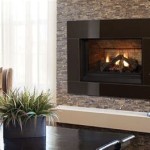The Aesthetic and Functional Significance of Wood Trim Around a Fireplace Hearth
The fireplace, traditionally a central gathering point in a home, often benefits from careful design considerations that enhance both its visual appeal and functional utility. Among these considerations, the choice and application of wood trim around the fireplace hearth play a pivotal role. Wood trim, in its diverse styles and finishes, serves as a crucial element in defining the fireplace's character, integrating it seamlessly with the surrounding architecture, and providing a layer of protection to adjacent materials.
The hearth itself is a non-combustible area extending in front of and to the sides of the fireplace opening. Its primary function is to protect the floor from sparks and embers that might escape the firebox. The wood trim surrounding the hearth, therefore, must be strategically placed to complement this protective function while adding aesthetic value. The relationship between the wood trim and the hearth material, be it stone, brick, tile, or concrete, profoundly affects the overall ambiance of the room.
Aesthetic Contributions of Wood Trim
Wood trim offers a wide range of aesthetic possibilities, allowing homeowners to tailor the fireplace design to their specific tastes and the overall design scheme of the room. The selection of wood species, profile, stain, and finish all contribute to the fireplace's visual identity. For instance, a dark-stained oak trim can evoke a sense of traditional elegance, while a light-colored maple trim can lend a more contemporary and airy feel. The profile, or shape, of the trim can range from simple, clean lines to elaborate, ornate carvings, further influencing the fireplace's style.
Beyond the inherent qualities of the wood itself, the finish applied significantly impacts the trim's appearance and durability. A glossy finish will reflect light and highlight the wood's grain, while a matte finish will provide a more subtle and understated look. The choice of stain color can either contrast with or complement the hearth material, creating visual interest and depth. Consider the existing architectural details of the room. If the room has crown molding, baseboards, or window trim, the fireplace trim should ideally coordinate with those elements to create a cohesive and harmonious design. Furthermore, the scale of the trim should be proportional to the size of the fireplace and the surrounding wall. Overly large trim can overwhelm a small fireplace, while too-small trim can appear insignificant and lost.
The overall aesthetic goal should be to create a fireplace that seamlessly integrates with the room's design while also making a statement as a focal point. The wood trim plays a crucial role in achieving this balance, acting as a visual bridge between the fireplace and the surrounding space. Careful consideration of the wood species, profile, finish, and integration with existing architectural details will result in a fireplace that is both aesthetically pleasing and harmoniously integrated into the room's design.
Functional Considerations and Safety
While aesthetics are a primary concern, the functional role of wood trim around the fireplace hearth cannot be overlooked. The trim serves to protect the edges of the hearth material, preventing chipping and wear and tear. It also acts as a barrier, protecting the surrounding wall from heat and potential damage. Furthermore, the trim can conceal any gaps or imperfections between the hearth and the wall, creating a clean and finished look. Choosing the right wood and ensuring proper installation are paramount for safety.
Given the proximity to the fireplace, the wood trim must be carefully selected and installed to minimize the risk of fire. While the hearth itself is designed to be non-combustible, the wood trim should be placed a safe distance from the firebox opening to prevent overheating and potential ignition. Local building codes typically specify minimum clearances between combustible materials and the fireplace opening. Adhering to these codes is essential for ensuring the safety of the fireplace and the home. Fire-resistant wood choices and intumescent coatings that expand and char when exposed to high heat can minimize the fire risk.
Proper installation is crucial for both safety and longevity. The trim should be securely attached to the wall and the hearth, using appropriate fasteners and adhesives. Any gaps or cracks should be properly sealed to prevent drafts and moisture infiltration. The finish applied to the wood should also be heat-resistant to prevent discoloration or damage from the fireplace's heat. Regular inspection and maintenance of the wood trim are necessary to identify and address any potential issues, such as cracks, warping, or loose fasteners. Addressing these issues promptly will prevent further damage and ensure the continued safety and functionality of the fireplace.
Wood Species and Finishes: Making the Right Choices
The selection of wood species and finishes for the fireplace hearth trim is a crucial step in achieving the desired aesthetic and functional outcome. Different wood species offer varying characteristics in terms of grain patterns, hardness, and natural color. These characteristics, combined with the choice of finish, significantly impact the final appearance and durability of the trim. Understanding the properties of different wood species and finishes is essential for making informed decisions that will enhance the fireplace's beauty and longevity.
Hardwoods like oak, maple, and cherry are popular choices for fireplace trim due to their durability and attractive grain patterns. Oak, with its distinctive grain and inherent strength, is a classic choice that can be stained to achieve a wide range of colors. Maple, with its fine grain and smooth surface, offers a more contemporary look and is well-suited for lighter finishes. Cherry, with its rich reddish-brown color and elegant grain, adds a touch of sophistication and warmth. Softwoods like pine and cedar are also viable options, particularly for more rustic or casual designs. Pine is readily available and relatively inexpensive, while cedar offers natural resistance to insects and decay. However, softwoods are generally more susceptible to dents and scratches than hardwoods, requiring more careful handling and maintenance.
The finish applied to the wood trim plays a crucial role in both protecting the wood and enhancing its aesthetic appeal. Paint provides a durable and opaque finish that can be easily customized to match any color scheme. Stain penetrates the wood, highlighting its natural grain and adding depth and richness. Varnish and lacquer provide a clear protective coating that enhances the wood's natural beauty while also providing resistance to scratches and moisture. The choice of finish will depend on the desired look and the level of protection required. For fireplaces that are frequently used, a durable and heat-resistant finish is essential to prevent damage from heat and soot. Regular cleaning and maintenance will help to preserve the finish and keep the wood trim looking its best.
Selecting the right wood species and finish requires careful consideration of the fireplace's style, the room's overall design, and the desired level of durability and maintenance. Consulting with a professional woodworker or interior designer can provide valuable guidance in making informed decisions that will result in a beautiful and long-lasting fireplace hearth trim.
In conclusion, the wood trim around a fireplace hearth is more than simply a decorative element; it is an integral component that contributes significantly to the fireplace's overall aesthetic appeal, functional utility, and safety. By carefully considering the aesthetic contributions, functional considerations, and wood species and finish options, homeowners can create a fireplace that is both beautiful and enduring.

Diy Fireplace Finished Addicted 2 Decorating

Diy Fireplace Finished Addicted 2 Decorating

Fireplace Trim

Installing Hardwood Flooring Around A Fireplace Hearth Easiklip Floors

Diy Fireplace Part 5 Trim Grout And Mantel Addicted 2 Decorating

Edging For Flooring Around Fireplace Mumsnet

Transition Moldings Unique Wood Floors Installing Hardwood Fireplace Hearth Burner

Help Edging Trim For Fireplace Heart Hometalk

Fireplace Trim Kit

Fireplace Makeover From Craftsman To Traditional Addicted 2 Decorating
Related Posts








